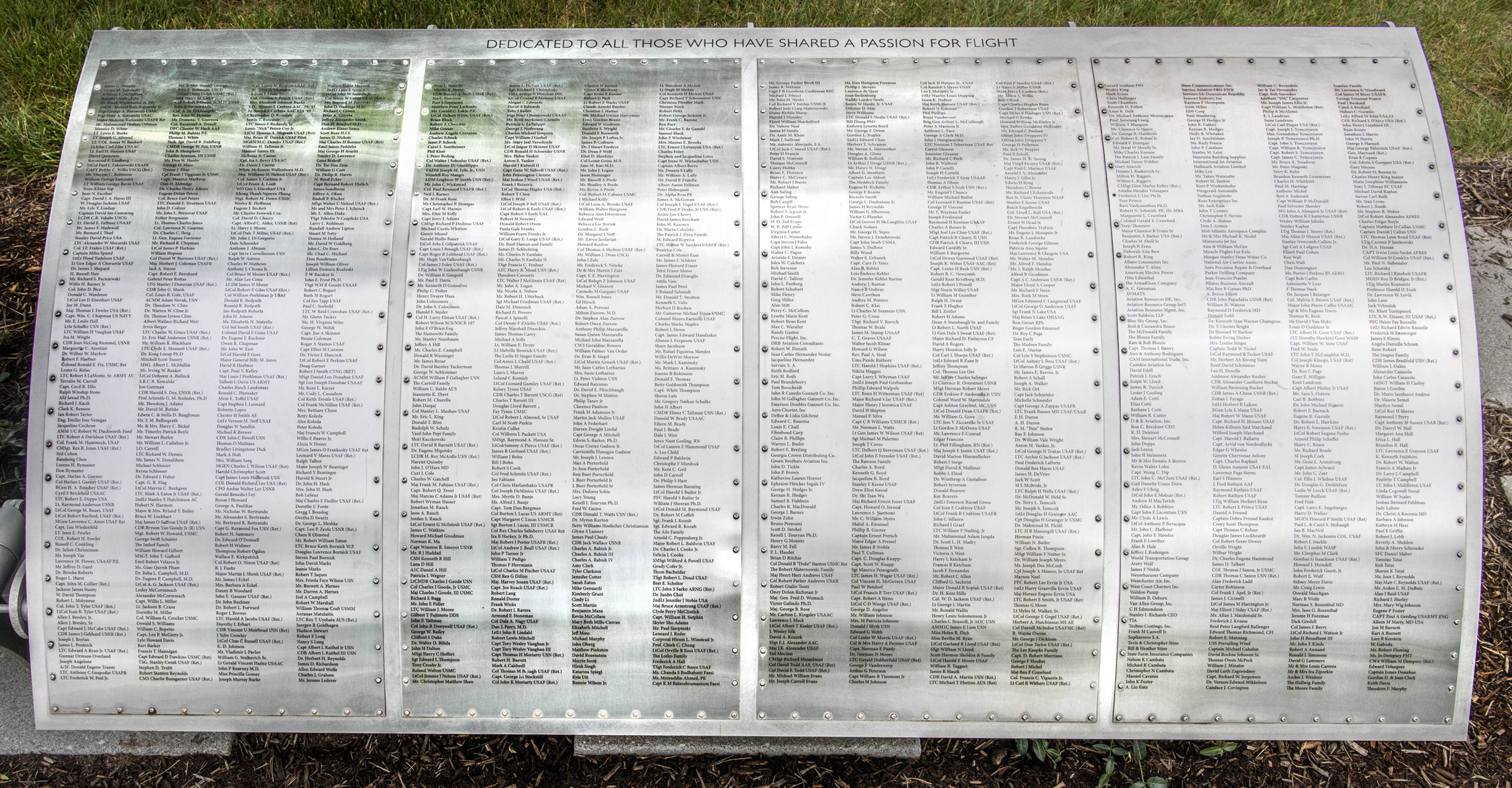Captain Lea Abbott
Foil: 5 Panel: 3 Column: 2 Line: 22
Wall of Honor Level: Air and Space Friend
Honored by:
Mr. William H. Parker
Friday, October 6, 2000
METROPOLITAN
PALIAS. MDRHIHb NSWS
Barnstorming aviator Lea Abbott dies at 93
Pilot remembered for his instinct, passion
By Joe Simnacher
Staff Writer of The Dallas Morning News
Lea Abbott was 7 years old when he saw his first airplane at a Nebraska fairgrounds. After a daylong effort, exhibitors managed to get airborne for 10 or 15 seconds before crashing the 1910 Curtiss Pusher.
The event was enough to inspire Mr. Abbott, who went on to log more than 31,000 hours - the equivalent of V/z years nonstop - piloting aircraft. His career
spanned fabric-covered biplanes and modern commercial aircraft.
After retiring as a senior pilot for Braniff Airways in 1962, he became a fixture at air shows across the country, flying a replica of the 1910 biplane that initially sparked his interest.
Mr. Abbott, 93, died Monday of complications from a stroke at a Mc-Kinney health-care center. Services were private.
Born in 1907 - 3 years after the Wright brothers' first flight - Mr. Abbott grew up in Nebraska City, Neb. He attended the University of Nebraska for one year before deciding to try his hand at aviation, said his son, Paul Abbott of Dallas.
His father learned to fly in Kansas City in 1930, when aviation was physically and financially risky. Mr. Abbott lived in aircraft hangars, making his living repairing planes and giving flying lessons, his son said.
Mr. Abbott soon joined a group of Texas barnstormers. His signature maneuver was to kill his engine at the end of his show and place his white-gloved hands outside the plane where they would be visible to the crowd. He would then perform a loop - handling the controls with his knees - and land the plane in front of the crowd, his son said.
One time during the maneuver, a wing came off while his plane was upside-down. He parachuted out, injuring his leg when he landed on a fence post.
In 1933 Mr. Abbott was giving lessons out of Dallas Love Field when he started recording early-morning weather conditions for the weather service. With no pay and no supplemental oxygen, he would fly to 18,000 feet each day to capture the plane's instrument readings on the weather.
Later, he flew two-passenger aircraft and mail from Dallas to Houston for Long & Harmon. In January 1935, Long & Harmon was purchased by Braniff airlines, his employer for the next 28 years.
Once, while landing a DC-6 at Love Field, a mechanical stop failed on the throttles, reversing two of the plane's four engines as it flew over the Coca-Cola plant at the edge of Love Field. "Because of his barnstorming days and his experience of flying by the seat of his pants," he reacted on instinct and was able to land the commercial plane, his son said. In 1985 Mr. Abbott recalled the incident for the Omaha World-Herald. "Otherwise we would have crashed, and it would have been listed as pilot error, which covers a multitude of sins," he said.
Lea Abbott's career spanned fabric-covered biplanes and modern commercial aircraft. He retired as a senior pilot for Braniff Airways in 1962. His extensive experience often came in handy during emergency situations. In 1937 Mr. Abbott landed a DC-2 in Corpus Christi at night after a storm had knocked out the field's landing lights and made his radio useless. He used the reflection of lightning strikes on the storm-drenched runway to find his way safely, his son said.
In 1979, Mr. Abbott bought a replica of the 1910 Curtiss Pusher from an experimental aircraft organization.
"They tried for six years to get it to fly but never made it," he told the World-Herald. "They had some aeronautical engineers in the group, too."
The veteran pilot was not only able to fly the biplane, but he also made a habit of it. For the next 10 years Mr. Abbott dressed in period clothing and flew the replica at air shows.
Although Mr. Abbott belonged to a generation that didn't talk much about passion or emotion, his son said his father loved working with machines and found a spiritual release in flying.
"Maybe there was something about being up in the air that gave him some kind of freedom for the things he held inside," his son said. "And there was the satisfaction that he could do something well."
In addition to his son, Mr. Abbott is survived by another son, Ned Abbott of Allen, Texas; a daughter, Mary Lea Butler of Hot Springs Village, Ark.; a sister, Annabel Wilson of Santa Barbara, Calif; nine grandchildren; and seven great-grandchildren.
Wall of Honor profiles are provided by the honoree or the donor who added their name to the Wall of Honor. The Museum cannot validate all facts contained in the profiles.
Foil: 5
All foil images coming soon.View other foils on our Wall of Honor Flickr Gallery
